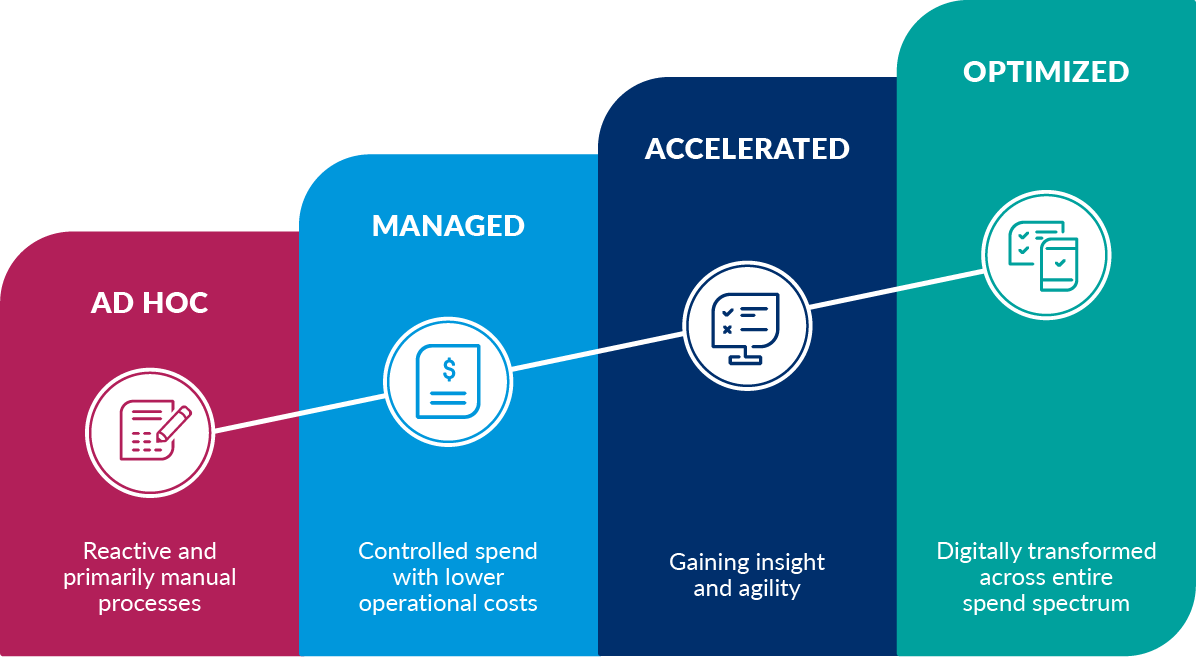What’s the first action most CFOs will take in the face of a recession? According to Deloitte’s CFO Signals Survey, it’s to reduce or more closely manage operating costs at their organization.¹
So it’s clear why there has been a collective corporate belt-tightening this past year. Employee expenses have been heavily scrutinized, vendor contracts renegotiated, and headcounts reduced. It’s a theme that will continue in the year ahead as organizations grapple with slower growth, high inflation, and an uncertain global economy.
But, as any good finance leader knows, effective cost management is not one size fits all. Elon Musk may have no problem issuing wholesale changes to Twitter’s expense and travel policy and eliminating numerous allowances in one fell swoop, but most companies will opt to identify areas for savings via more precise methods.
That’s where Spend Optimization comes in. An organization that has fully optimized its spend has complete visibility into all areas of cash flow across the business including employee expenses, corporate travel, and accounts payable, and can quickly identify opportunities for cost savings or rebates through data insights.
By utilizing automation and analytics, an organization that has optimized its spend can avoid wasteful practices such as duplicating vendor payments, incurring late fees on invoices, or approving out-of-policy expense claims. At the same time, armed with streamlined digital processes that minimize friction for finance and end users alike, it reduces the time its teams spend buried in spreadsheets, so they can focus on more strategic work.
Today, we’re making it easier for any organization to quickly assess how far along it is on the path to Spend Optimization. With the launch of our Spend Optimization Grader, you can receive tailored recommendations for efficiently and effectively improving your corporate spend processes.
By understanding how your organization currently ranks within Emburse’s Spend Optimization model, you can learn what changes are needed to improve efficiencies and the overall performance of your organization, even in the face of economic headwinds. Becoming fully optimized doesn’t happen overnight; it’s a transformation that requires planning and focus. Based on our experience helping over 16,000 companies optimize their spend, we’ve gathered the insights needed to identify some of the top problem areas that can hinder performance within finance, AP and travel departments. Once you complete the assessment, your instant results show you exactly where you are on the maturity model and provide clear, practical steps to help you reach the next stage.
How does the Spend Optimization Grader work?
You’ll take a simple five-minute online quiz answering questions about your current expense management, corporate travel, and accounts payable processes. After completing the questionnaire, you’ll instantly see your Spend Optimization Grade, and a snapshot of the impact your current spend processes are having on your business.
You’ll also receive detailed recommendations for improving efficiency in each spend function. For example:
- How to minimize time on manual expense approvals and improve real-time spend visibility with virtual cards
- How to reduce out-of-policy travel bookings and take better advantage of rebates - and even how to improve the employee experience and carbon footprint of your business travel program
- How to automate and integrate payment solutions to sync spend data between your AP, finance, and procurement departments for optimal cost control
What does your Spend Optimization Grade mean?
There are four stages of Spend Optimization. Your grade shows you which stage you’re in and how to reach the next stage.

Ad hoc - reactive with primarily manual processes. If you’re at this stage, you likely rely on spreadsheets, email, manual data entry, and paper checks. You don’t yet have the ability to optimize the timing of payments or reimbursements and have few proactive controls, relying on manual spot-checking for compliance after the fact.
Managed - basic spend controls in place. Those at this stage have some tools for basic automation and reporting and limited spend controls, but may struggle with slow approval times and a lack of actionable spend insights.
Accelerated - increased control and agility but few actionable insights. Companies at this stage have automated controls and processes, resulting in faster reimbursement and payments, but data is siloed, and you’ll want to bolster your analytics capabilities to identify cost-saving or cash flow improvement opportunities.
Optimized - digitally transformed across the entire spend spectrum. If you’re at this stage, you are able to make strategic spend decisions based on data, directly impacting opex, revenue, and cash flow as well as team productivity.
Does the Spend Optimization Grader help me save?
Yes! You’ll uncover inefficiencies in your process that can result in wasted spend or missed savings opportunities. Not only that, but you’ll identify ways to save time and increase productivity, which is essential at a time when skilled resources are scarce.
Furthermore, if you would like to discuss any of the recommendations in more detail, you can book a free consultation with an expert directly within the Grader.
2023 will come with its fair share of challenges. But, the Spend Optimization Grader will help you identify wins, both big and small, and arm you with a plan to optimize your spend further so that you can ring in the new year with confidence.
Ready to optimize your spend? Get your personalized Spend Optimization grade.
¹ Deloitte CFO Signals, 3Q 2022
